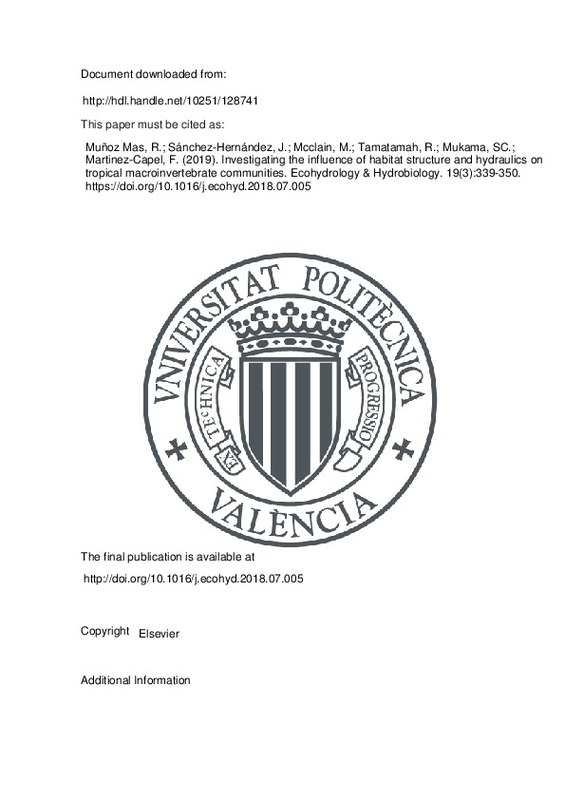JavaScript is disabled for your browser. Some features of this site may not work without it.
Buscar en RiuNet
Listar
Mi cuenta
Estadísticas
Ayuda RiuNet
Admin. UPV
Investigating the influence of habitat structure and hydraulics on tropical macroinvertebrate communities
Mostrar el registro completo del ítem
Muñoz Mas, R.; Sánchez-Hernández, J.; Mcclain, M.; Tamatamah, R.; Mukama, SC.; Martinez-Capel, F. (2019). Investigating the influence of habitat structure and hydraulics on tropical macroinvertebrate communities. Ecohydrology & Hydrobiology. 19(3):339-350. https://doi.org/10.1016/j.ecohyd.2018.07.005
Por favor, use este identificador para citar o enlazar este ítem: http://hdl.handle.net/10251/128741
Ficheros en el ítem
Metadatos del ítem
| Título: | Investigating the influence of habitat structure and hydraulics on tropical macroinvertebrate communities | |
| Autor: | Muñoz Mas, Rafael Sánchez-Hernández, Javier McClain, Michael Tamatamah, Rashid Mukama, Shelard Chilemeji | |
| Entidad UPV: |
|
|
| Fecha difusión: |
|
|
| Resumen: |
[EN] The influences of habitat structure and hydraulics on tropical macroinvertebrate communities were investigated in two foothill rivers of the Udzungwa Mountains (United Republic of Tanzania) to assist future Environmental ...[+]
|
|
| Palabras clave: |
|
|
| Derechos de uso: | Reconocimiento - No comercial - Sin obra derivada (by-nc-nd) | |
| Fuente: |
|
|
| DOI: |
|
|
| Editorial: |
|
|
| Versión del editor: | http://doi.org/10.1016/j.ecohyd.2018.07.005 | |
| Agradecimientos: |
This study was financed by the United States Agency for International Development (USAID) as part of the Technical Assistance to Support the Development of Irrigation and Rural Roads Infrastructure Project (IRRIP2), ...[+]
|
|
| Tipo: |
|







![[Cerrado]](/themes/UPV/images/candado.png)


